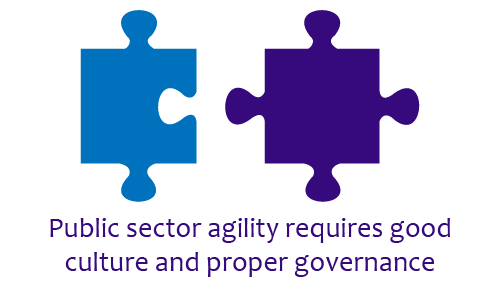Almost everyone in Australia is aware of the banking royal commission. It issued an interim report about a month ago. The following extract from the report caught my eye:
“Good culture and proper governance cannot be implemented by passing a law. Culture and governance are affected by rules, systems and practices but in the end they depend upon people applying the right standards and doing their jobs properly.” – Interim Report of the Royal Commission into Misconduct in the Banking, Superannuation and Financial Services Industry, 28th September 2018
This is directly relevant to the public sector, and in particular the digital transformation agenda.
Transformation is Tough
The vast majority of large public sector organisations are trying to implement major changes. Some are about policy delivery, some are behind the scenes, many of them are digitally enabled.
Transformation is a seductive and worthwhile goal. No longer do we want to just use technology to support and enable service delivery. We want to make it easy for people to deal with government, to rethink and transform services to be simple, clear and fast.
The Digital Transformation Agency (DTA) is leading the government’s digital transformation efforts, and many departments and agencies are working hard to improve how services are delivered online.
But it isn’t easy. It is tough. Progress is slow. At this point there are precious few examples where the public is singing the governments praises for its transformation of services.
“Let’s be more agile”
This is the typical organisational response that is central to digital transformation efforts. It is a legitimate response, characterised by:
- Creation of agile delivery teams
- Establishment of an innovation hub
- Engagement of agile coaches
- Scrum training
- Proliferation of Kanban boards.
Doing these things should, one would hope, result in vision, evolution and opportunity. But too often the result is confusion, dislocation and distrust.
Barriers to transformation
What is getting in our way? It is things such as:
- Silo thinking (“turf-protection”)
- Complacency
- Lack of change buy-in
- Other parts of the department or agency not being in step with the agile delivery team – central areas such as legal, procurement etc still work in traditional ways with long timescales that hamper agility.
Governance and Culture
Agile approaches still require proper governance, and slowly but surely delivery teams are starting to appreciate and optimise the relationship between frameworks such as MSP®, PRINCE2® and PRINCE Agile® and agile approaches such as Kanban and Scrum.
But it is culture that makes this all work. Public sector departments and agencies need a culture of enterprise agility across the whole organisation, not just in the agile delivery teams. They must systematically educate all those touched by change, and remove institutional or behavioural barriers to change. SES leaders must help all people in their organisation:
- Be okay with change and uncertainty
- Understand what Agile ways of working are
- Embrace simple Agile frameworks that can work for anyone.
Because as the interim report of the royal commission said:
“Good culture and proper governance cannot be implemented by passing a law. Culture and governance are affected by rules, systems and practices but in the end they depend upon people applying the right standards and doing their jobs properly”.
Do you agree?
Please comment on the blog itself or via LinkedIn.
Feel free to call me personally on 0407 404 688 or email me at john.howarth@tannerjames.com.au.






Leave A Comment